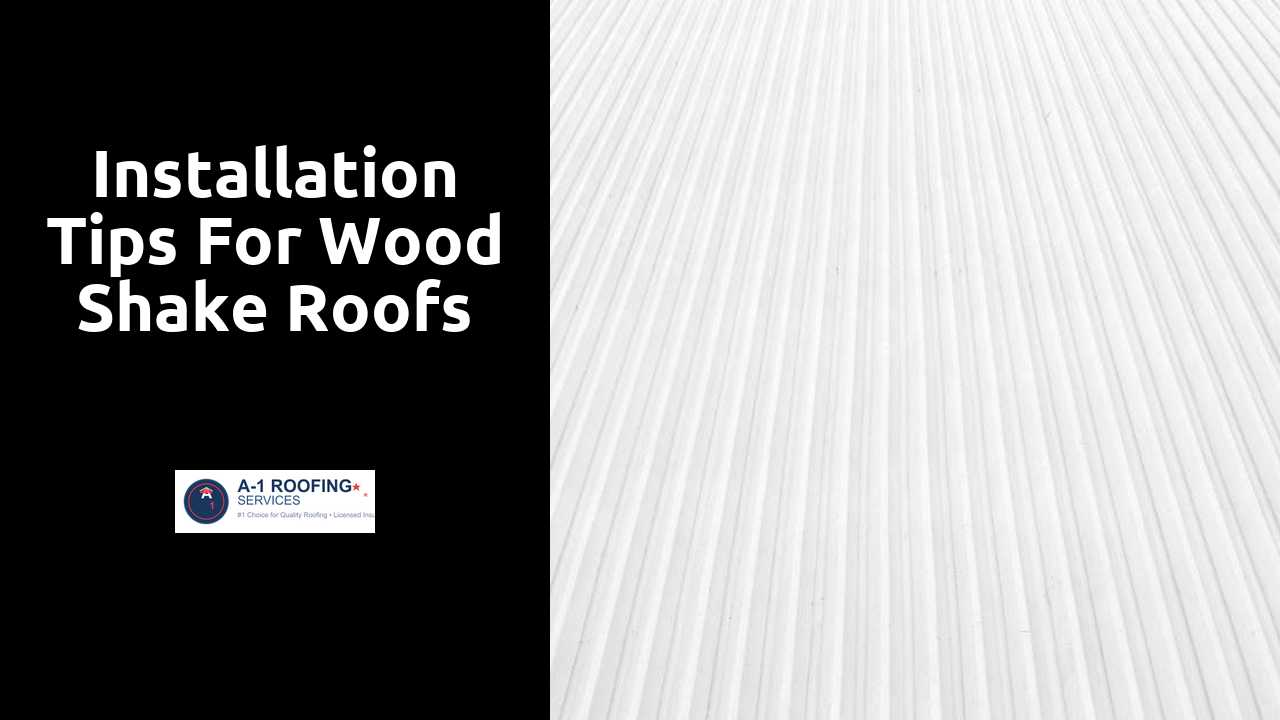
Installation Tips for Wood Shake Roofs
Table Of Contents
Starting the Installation Process
Before diving into the installation of wood shake roofs, thorough preparation is essential. Start by assessing the existing roof structure. Ensure that it is sound and free from any significant damage. Any compromised materials underneath can lead to issues down the line. Having the right tools and materials on hand will streamline the process, so gather everything you need, including shakes, nails, a level, and safety equipment.
Next, it is important to plan the layout of the shakes. Measure the roof's dimensions and determine how many shakes you will need, purchasing a little extra to account for cuts and waste. Establish a starting point, typically near the eaves, and mark your lines for reference. This strategy will help maintain proper alignment and enhance the overall aesthetic of the roof. Taking the time to prepare and strategize can significantly impact the efficiency of the installation.
See here for more great tips.
Step-by-Step Guide for Initial Setup
Before starting the installation of wood shake roofs, gather all necessary materials and tools. This includes the shakes, underlayment, roofing nails, and safety equipment. Safety should be a priority, so ensure that you are wearing a harness if working on a steep roof. Prepare the roof deck by making sure it is clean and free from debris. Inspect it for damages; any underlying issues should be repaired before proceeding.
Next, lay the underlayment, which provides a moisture barrier and additional protection against the elements. Overlap the sheets according to manufacturer specifications to ensure proper water runoff. Begin placing the wood shakes at the eaves, securing them with nails driven in at a suggested angle to enhance stability. Maintain a consistent gap between shakes to allow for expansion and contraction. Regularly check for level alignment as you work your way up the roof to ensure an aesthetically pleasing and functional installation.
Proper Alignment Techniques
Achieving proper alignment is crucial for the overall integrity and aesthetic appeal of a wood shake roof. Start by laying the first row of shakes in a straight line, ensuring that they are level and positioned correctly along the eaves. Utilizing a chalk line can help create a guide for placing the shakes uniformly. Check for any discrepancies frequently during installation to avoid cascading alignment issues in subsequent rows.
As you progress to the next rows, overlap the shakes according to the manufacturer’s guidelines. Each staggered row should offset the shakes in the previous layer, which not only enhances the roof's visual appeal but also contributes to its weather resistance. Regularly measuring and marking the placement points can further ensure that the shakes remain aligned and evenly spaced throughout the installation process.
Ensuring Even and Secure Placement
Achieving a uniform alignment during the installation of wood shake roofs is crucial for both aesthetic appeal and protection against the elements. Start by marking reference lines on the roof deck. These guidelines help maintain consistent overlap and spacing between shakes. Use a chalk line for long runs to ensure straightness, as any deviation can lead to uneven rows that detract from the overall look and integrity of the roof.
Once the shakes are positioned according to the reference lines, secure each piece firmly. Use appropriate fasteners such as stainless steel nails to prevent corrosion. It is essential that nails penetrate through the shakes and into the underlying structure without over-driving or under-driving, which can cause leaks or damage over time. Regularly check the placement as you work, making adjustments as necessary to ensure a tight fit that adheres to both manufacturer specifications and local building codes.
Moisture Barrier Installation
A moisture barrier is essential for protecting the underlying structures from water damage. Installing a reliable underlayment not only shields against moisture but also contributes to the lifespan of your wood shake roof. Begin by selecting a high-quality membrane that fits your project's needs. Ensure coverage of the entire roof deck, allowing for overlaps at the seams based on the manufacturer's specifications.
When placing the underlayment, start at the bottom edge of the roof and work your way up. This overlapping technique prevents water from pooling under the seams. Secure the underlayment with roofing nails or staples as recommended, ensuring it lies flat without wrinkles or bubbles. Proper tension and adherence to the deck will create a solid foundation for the wood shakes, enhancing overall stability and performance.
Importance of a Quality Underlayment
A quality underlayment plays a crucial role in protecting the structural integrity of a wood shake roof. It serves as the first line of defense against moisture infiltration, which can lead to rot and decay. The underlayment not only acts as a barrier against water but also provides additional insulation and helps regulate temperature fluctuations beneath the roofing material. When properly installed, it can enhance the overall longevity of the roof, reducing the need for frequent repairs or replacements.
Choosing the right type of underlayment is essential to ensure effective moisture management. Synthetic options tend to offer better durability and resistance to tearing compared to traditional felt, making them a popular choice among professionals. Investing in a high-quality underlayment can also improve the roof's performance against wind uplift and other environmental stressors. Proper installation of this crucial layer will significantly contribute to the roof's efficiency and resilience over time.
Related Links
Common Issues and Repairs for Wood Shake RoofsMaintenance Strategies for Wood Shake Roofing